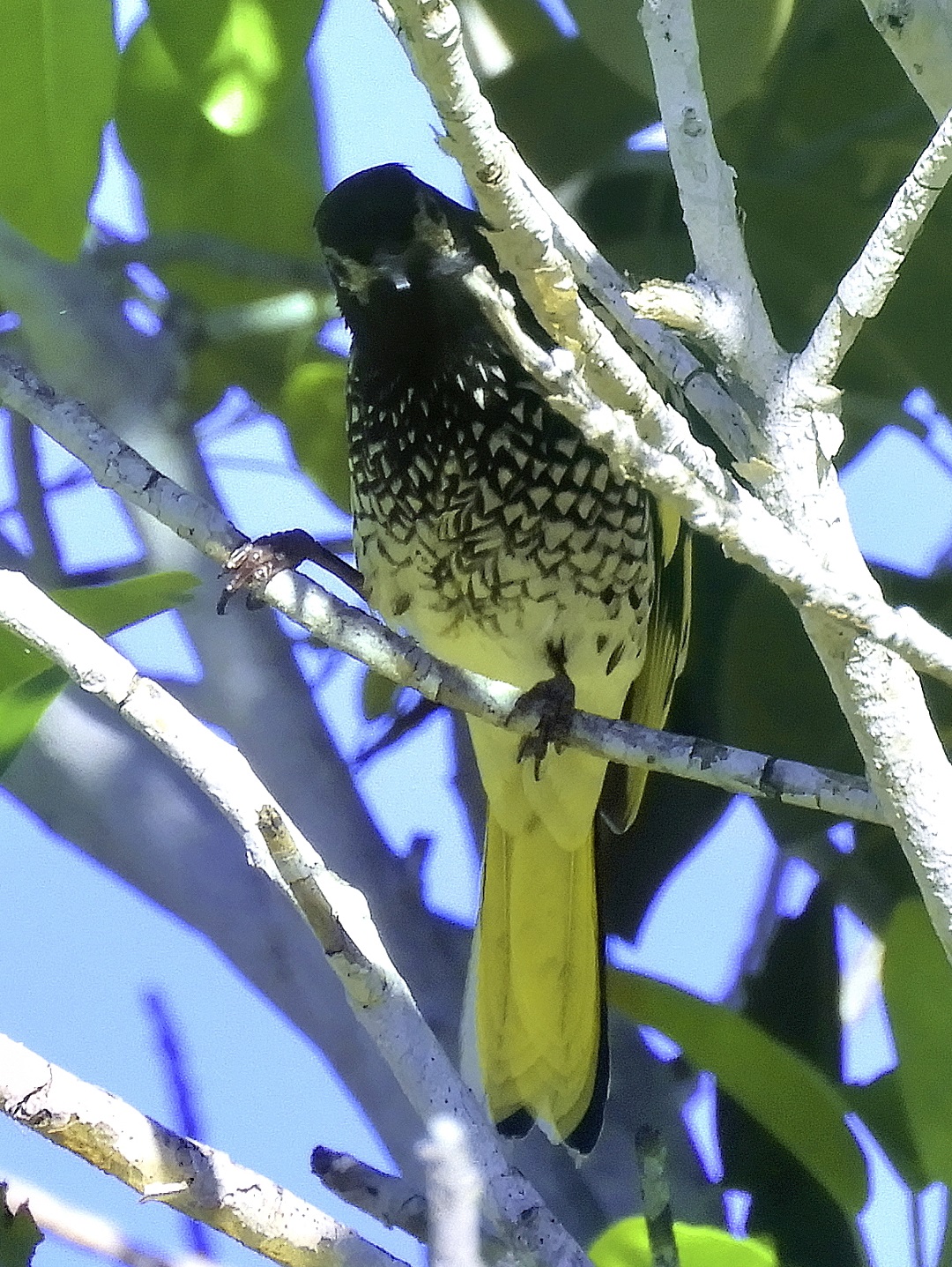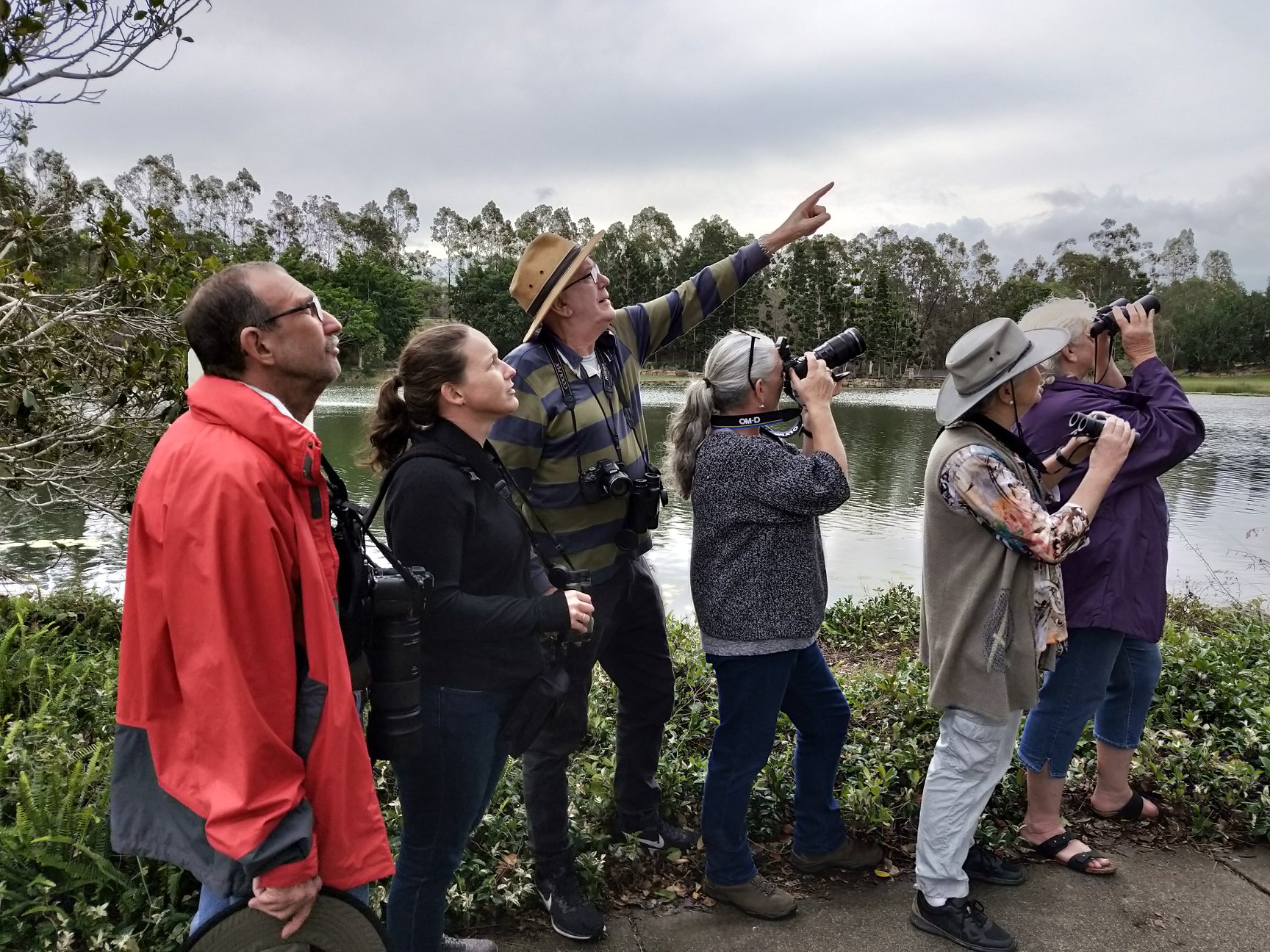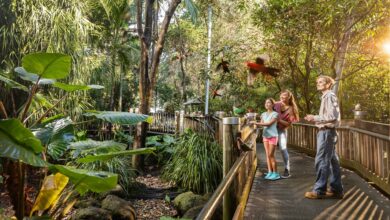A rare Australian bird has local birdwatchers in a flap.
The endangered regent honeyeater has been spotted at Spring Lake, Springfield Lakes.
Peter Gelding has been bird watching for about 30 years.
He describes the moment an unusual bird call caught his attention.
“I was down by Spring Lake conducting a monthly bird survey where I record all the birds I see,” Mr Gelding said.
“I was looking through my binoculars into the canopy of a fig tree, to try and work out how many little friarbirds there were and I couldn’t believe what I was seeing.
“Straight away I saw it, I nearly fell over in shock.
“I wasn’t expecting it.
“I knew what it was so I grabbed my camera to make a video so I could record its sound, I could hear it calling.
“I uploaded the image to BirdLife Australia Bird ID and got an instant response, that it was a regent honeyeater.”

Regent honeyeater. Image by Peter Gelding
Since then birdwatchers from across Australia have been flocking to Spring Lake to catch a glimpse of the bird with only 400 estimated birds left in the wild.
Birdwatchers have reported finding a second regent honeyeater and they have been seen in various ironbark trees in the area.
One bird watcher described it as “a carnival type atmosphere” as bird watchers staked out the park trying to capture a photo or video the rare birds.
Mr Gelding believes the magnificent birds need to be appreciated and protected.
Springfield Lakes Nature Care president Luise Manning said these birds are important pollinators of eucalypt trees.
“Clearly we need more funding to help these beautiful endangered birds make a comeback and we should be doing everything possible to protect their habitat, as habitat loss is a major reason for their declining numbers.”
Springfield Lakes Nature Care is holding a tree planting event on Sunday, 28 July at Regatta Lake to celebrate National Tree Day.
Planting trees will help revegetate the lake and provide habitat for small birds.
Regent honeyeater facts
They are a black with bright yellow edges to the tail and wing feathers that can be found between south-east Queensland and central Victoria.
The birds are a medium sized honeyeater between 200 to 230 millimetres long weighing between 31 to 50 grams.
It is a nomadic and partly migratory bird that moves around eating various eucalypt species.
It mainly feeds on nectar from eucalypts and mistletoes and it prefers taller and larger diameter trees for foraging.
Breeding varies between regions, and corresponds with flowering of key eucalypt and mistletoe species.
The bird is part of a species recover effort which imporves quality and quantity of woodland habitat, as well as reducing the threats of noisy miners.
Efforts to conserve the regent honeyeater will also benefit the brush-tailed phascogale, squirrel glider, bush stone-curlew, swift parrot and painted honeyeater which use the same woodland habitats.



We know how exciting that is! (A friend just sent this to me). We have been living in the foothills East of Tenterfield for 30 years and also saw and photographed our first ever Regent Honeyeater more than a month back. (Positively identified by an excited fellow monitoring them Australia-wide). I think he said it was the first sighting for New South Wales for this year (and last). Great spotting! Let’s hope they manage to stick around. They are certainly welcome here.